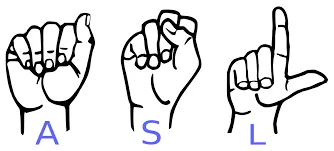
Deafness is a condition of impaired hearing function that can last temporarily or even permanently. Because of someone's hearing loss, deaf people will have difficulty communicating with others. There are several things that cause this hearing loss, such as heredity, disturbances while still in the womb, trauma, or too much noise. To facilitate communication with deaf people, there are ways to communicate that can be done, you. If you want to communicate with deaf people, you can use your fingers to form sign language, here.

By using this sign language, deaf people can establish communication with other people. Sign language was first taught by a doctor named Geronimo Cardano from Padua, Italy in the 16th century. Doctor Cardano realized that deaf people could be taught to understand symbols by matching them to the things they saw.
Doctor Cardano's understanding began when he taught writing language to his son who was deaf and realized that his son's understanding was the same as other children who did not have hearing problems.
Then in 1775, a abbot named Charles Michel de L'Eppe from Paris founded the first free school for deaf people. At this school, L'Eppe teaches deaf people to communicate using gestures, fingers and hands, and forms letters using fingers.
Sign language spread to the United States after Thomas Hopkins Gallaudet, a clergyman, was invited to Paris to learn about sign language.
Until now, many sign languages have been used in every country, but there is still one international language that is recognized and used.
There are many successful world figures even though they're deaf.
Ludwig van Beethoven is a composer and pianist from Germany who has become deaf since the age of 28 but still works by producing music.
Hellen Keller, a lecturer and author of the book is also the first deaf and blind person to complete his studies.
the sources of images are:
https://geneticliteracyproject.org
https://en.wikipedia.org